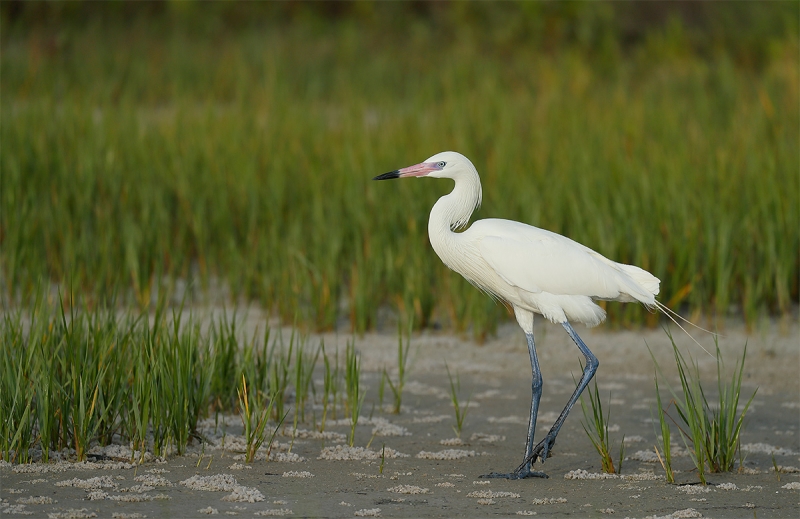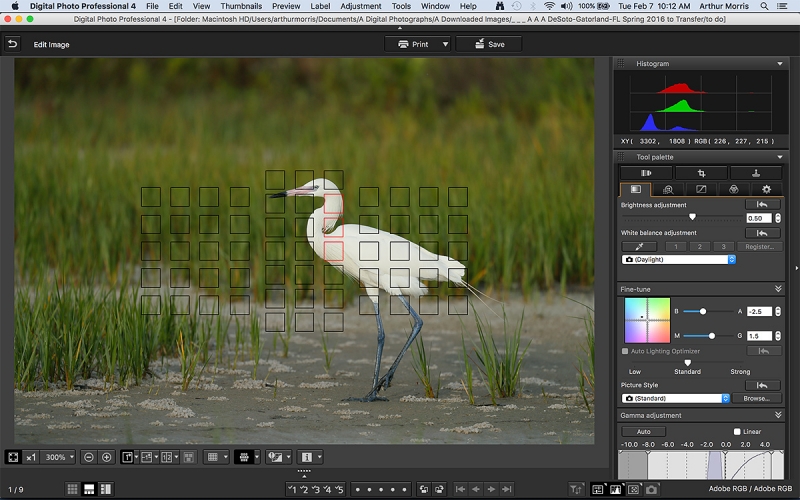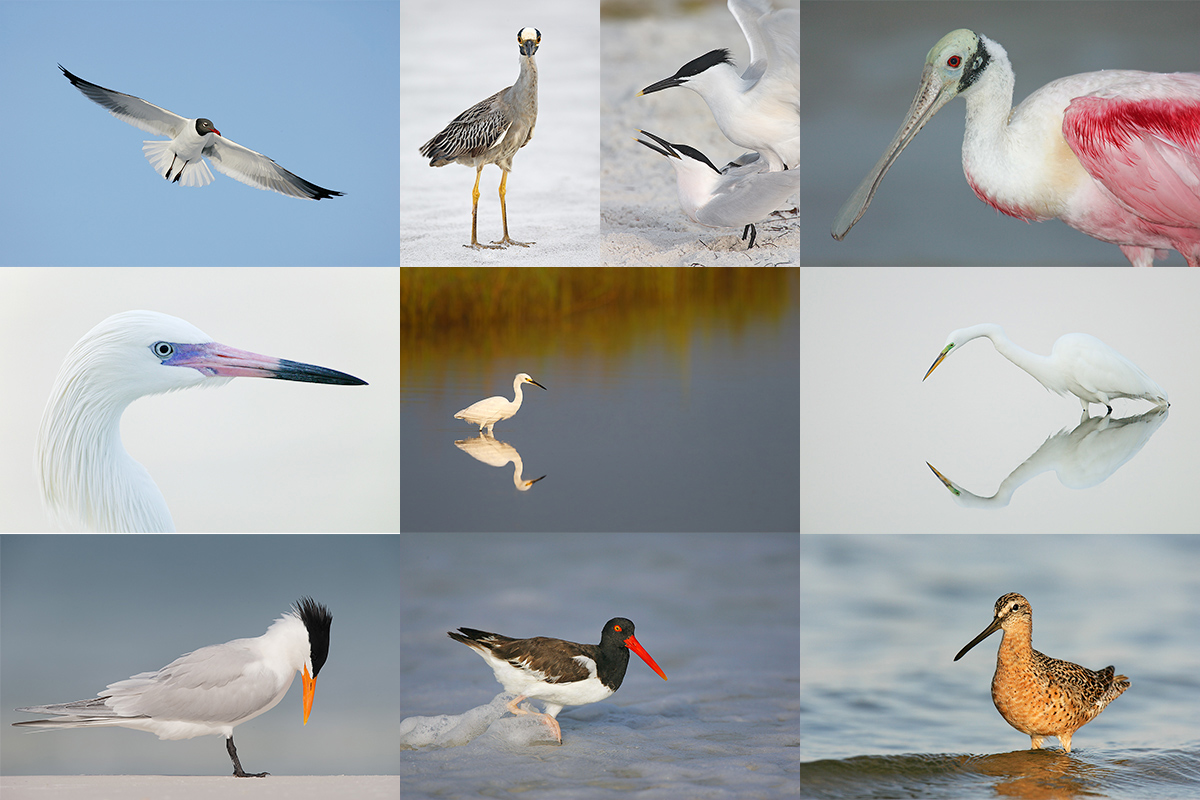What’s Up?
We lucked out with the sea eagles on DAY 2 WED FEB 14. The sunny forecast turned cloudy bright — ideal for the two eagle species — and the sea ice moved in the night before we got on the boat. Photos to follow. And to think that was only Day 2! I should continue to have good internet access every day. I get home late on 28 FEB.
Please note the correct date (and day of the week) for the Fort DeSoto Spring In-the-Field Cheap Meet-up Workshop (ITFW): the morning of Sunday, April 23, 2017. Scroll down for complete details.
Gear Questions and Advice
Too many folks attending BAA IPTs and dozens of folks whom I see in the field, and on BPN, are–out of ignorance–using the wrong gear, especially when it comes to tripods and more especially, tripod heads… Please know that I am always glad to answer your gear questions via e-mail.
The Streak: 461!
Today’s blog post marks a totally insane, irrational, illogical, preposterous, absurd, completely ridiculous, unfathomable, silly, incomprehensible, what’s wrong with this guy?, makes-no-sense, 461 days in a row with a new educational blog post. As always–and folks have been doing a really great for a long time now–please remember to use our B&H links for your major gear purchases. For best results use one of our many product-specific links; after clicking on one of those you can continue shopping with all subsequent purchases invisibly tracked to BAA. Your doing so is always greatly appreciated. Please remember: web orders only. And please remember also that if you are shopping for items that we carry in the BAA Online Store (as noted in red at the close of this post below) we would of course appreciate your business.
|
|
|
This image was created at Fort DeSoto in the spring of 2016 with the hand held Canon EF 100-400mm f/4.5-5.6L IS II USM lens (at 400mm) with the rugged, blazingly fast Canon EOS-1D X Mark II. ISO 400. Evaluative metering +1/3 stop: 1/2000 sec. at f/5.6 in Manual mode. Daylight WB. Center Zone/AI Servo/Shutter Button AF. The AF system selected three AF points as seen below in the DPP 4 screen capture. Click on the image to see a larger version. FocusTune/LensAlign Micro Adjustment: 0. Reddish Egret white morph |
White Morph Reddish Egret
Finding a white morph Reddish Egret is always a thrill. The colors of the soft parts on the nice bird in today’s featured image will get a lot brighter if and when it becomes actively engaged in breeding. The pinks get a lot pinker and the ultramarine blues become almost surreal. Still, with the neat, almost sculpted feathering about the head and neck, they are always quite neat. The combination here of the soft whites and the green of the marsh grasses is quite lovely.
|
|
The DPP 4 Screen Capture |
The DPP 4 Screen Capture
Note the active AF points illuminated in red. The AF system did a great job of selecting three AF points perfectly on the plane of the bird’s eye. Learning to recognize situation that should work well with Zone AF will make you a better photographer. The further advantage of Zone AF is that it gives you some leeway with framing; you are able to move the bird left of right in the frame as needed. Note the crop from below and from our right that enabled me to tighten up the composition and effectively moving the bird a bit back in the frame.
Image Question
If you think that you know what the little piles of sand balls (for lack of a better term) are from, please do leave a comment. Guesses are welcome.
|
DeSoto in spring is rife with tame and attractive birds. From upper left clockwise to center: breeding plumage Dunlin, dark morph breeding plumage Reddish Egret displaying, breeding plumage Laughing Gull/front end vertical portrait, breeding plumage Laughing Gull with prey item, Laughing Gull on head of Brown Pelican, screaming Royal Tern in breeding plumage, Royal Terns/pre-copulatory stand, Laughing Gulls copulating, breeding plumage Laughing Gull/tight horizontal portrait, Sandwich Tern with fish, and a really rare one, White-rumped Sandpiper in breeding plumage, photographed at DeSoto in early May. |
Fort DeSoto Spring IPT/April 19-22, 2017. (Meet & greet at 2pm on Wednesday April 19 followed by an afternoon photo session) through the full day on Saturday April 22. 3 1/2 DAYs: $1599. Limit 10. To save your spot, please call and put down a non-refundable deposit of $499.00.
I will be offering small group (Limit 3) Photoshop sessions on Sunday afternoon and Monday morning if necessary. Details on that TBA.
Fort DeSoto is one of the rare locations that might offer great bird photography 365 days a year. It shines in spring. There will Lots of tame birds including breeding plumage Laughing Gull and Royal and Sandwich Terns. With luck, we will get to photograph all of these species courting and copulating. There will be American Oystercatcher and Marbled Godwit plus sandpipers and plovers, some in full breeding plumage. Black-bellied Plover and Red Knot in stunning breeding plumage are possible. There will be lots of wading birds including Great and Snowy Egrets, both color morphs of Reddish Egret, Great Blue, Tricolored and Little Blue Heron, Yellow-crowned Night-Heron, and killer breeding plumage White Ibis. Roseate Spoonbill and Wood Stork are possible and likely. We should have lots of good flight photography with the gulls and terns and with Brown Pelican. Nesting Least Tern and nesting Wilson’s Plover are possible.
We will, weather permitting, enjoy 7 shooting sessions. As above, our first afternoon session will follow the meet and greet at 2pm on Wednesday April 19. For the next three days we will have two daily photo sessions. We will be on the beach early and usually be at lunch (included) by 11am. We will have three indoor sessions. At one we will review my images–folks learn a ton watching me choose my keepers and deletes–why keep this one and delete that one? The second will be a review of your images so that I can quickly learn where you need help. For those who bring their laptops to lunch I’d be glad to take a peek at an image or three. Day three will be a Photoshop session during which we will review my complete workflow and process an image or two in Photoshop after converting them in DPP. Afternoon sessions will generally run from 4:30pm till sunset. We photograph until sunset on the last day, Saturday, April 22. Please note that this is a get-your-feet and get-your-butt wet and sandy IPT. And that you can actually do the whole IPT with a 300 f/2.8L IS, a 400 f/4 ID DO lens with both TCs, or the equivalent Nikon gear. I will surely be using my 500 II as my big glass and have my 100-400 II on my shoulder.
|
DeSoto in spring is rife with tame and attractive birds. From upper left clockwise to center: Laughing Gull in flight, adult Yellow-crowned Night-Heron, copulating Sandwich Terns, Roseate Spoonbill, Great Egret with reflection, Short-billed Dowitcher in breeding plumage, American Oystercatcher, breeding plumage Royal Tern, white morph Reddish Egret, and Snowy Egret marsh habitat shot. |
What You Will Learn
You will learn to approach free and wild birds without disturbing them, to understand and predict bird behavior, to identify many species of shorebirds, to spot the good situations, to understand the effects of sky and wind conditions on bird photography, to choose the best perspective, to see and understand the light, to get the right exposure every time after making a single test exposure, and to design pleasing images by mastering your camera’s AF system. And you will learn how and why to work in Manual mode (even if you are scared of it).
The group will be staying at the Red Roof Inn, St. Petersburg: 4999 34th St. North, St Petersburg, FL 33714. The place is clean and quite inexpensive. Please e-mail for room block information. And please call Jim or Jennifer at 863-692-0906 to register. All will need to purchase an Annual Pass early on Tuesday afternoon so that we can enter the park at 6am and be in position for sunrise opportunities. The cost is $75, Seniors $55. Tight carpools will be needed and will reduce the per person Annual Pass costs. The cost of three lunches is included. Breakfasts are grab what you can on the go, and dinners are also on your own due to the fact that we will usually be getting back to the hotel at about 9pm. Non-photographer spouses, friends, or companions are welcome for $100/day, $350 for the whole IPT.
BIRDS AS ART Fort DeSoto In-the-Field Meet-up Workshop (ITFW): $99
Fort DeSoto Spring In-the-Field Cheap Meet-up Workshop (ITFW) on the morning of Sunday, April 23, 2017: $99
Join me on the morning of Sunday April 23, 2017 for 3-hours of photographic instruction at Fort DeSoto Park. Beginners are welcome. Lenses of 300mm or longer are recommended but even those with 70-200s should get to make some nice images. Teleconverters are always a plus.
You will learn the basics of digital exposure and image design, autofocus basics, and how to get close to free and wild birds. We should get to photograph a variety of wading birds, shorebirds, terns, and gulls. This inexpensive morning workshop is designed to give folks a taste of the level and the quality of instruction that is provided on BIRDS AS ART Instructional Photo-tours. I hope to meet you there.
To register please call Jim or Jennifer during weekday business hours with a credit card in hand to pay the nominal registration fee. Your registration fee is non-refundable. You will receive a short e-mail with instructions, gear advice, and meeting place one week before the event.
Please Remember to use my Affiliate Links and to Visit the New BAA Online Store 🙂
To show your appreciation for my continuing efforts here, we ask, as always, that you get in the habit of using my B&H affiliate links on the right side of the blog for all of your photo and electronics purchases. Please check the availability of all photographic accessories in the New BIRDS AS ART Online Store, especially the Mongoose M3.6 tripod head, Wimberley lens plates, Delkin flash cards and accessories, and LensCoat stuff.
As always, we sell only what I have used, have tested, and can depend on. We will not sell you junk. We know what you need to make creating great images easy and fun. And please remember that I am always glad to answer your gear questions via e-mail.
I would of course appreciate your using our B&H affiliate links for all of your major gear, video, and electronic purchases. For the photographic stuff mentioned in the paragraph above, and for everything else in the new store, we, meaning BAA, would of course greatly appreciate your business. Here is a huge thank you to the many who have been using our links on a regular basis and those who will be visiting the New BIRDS AS ART Online Store as well.
Be sure to like and follow BAA on Facebook by clicking on the logo link upper right. Tanks a stack.
Typos
In all blog posts and Bulletins, feel free to e-mail or to leave a comment regarding any typos or errors. Just be right :).


















Gotta go with fiddler crab balls.
They roll the detritus they eat from into these balls.
Have seen them on Cape Cod Mass.
crab hole excavation piles
I’m pretty sure that is what fiddler crabs push up from the surface when excavating.
Sand balls – don’t know, but I saw sand “worms” that looked like a 3D printer had made them (Haida Gwaii) and was told that it was excrement from some kind of subsurface worm when he came up.
Jack
Could you give some hints as to when to use Zone AF and Large Zone AF.
I like Large Zone especially when for verticals with tall birds and for horizontals when you need to focus on one side of the frame or the other. I do not use Zone a lot. Perhaps we both need to experiment with it more.
Understand that Expand properly placed will always give you more accurately focused images across the board; Zone and Large Zone give you more speed and flexibility in exchange at times for possibly less accurate focus …
a
Likely Fiddler Crabs. Here’s a link to Indonesia’s Sand Bubbler Crab https://youtu.be/CPqrGwRUG-0
Artie, Terrific Reddish Egret photo! It would be interesting and possibly instructive to compare a Fujifilm gear photo to a Canon image of this quality, same field setting.
As far I know, earthworms make those sandballs
crab poop
Sand balls: fiddler crab excavation debris, I think.
Eddy just beat me! Also in Australia.
I have seen similar sandballs in Australia. They were made by sand bubbler crabs.